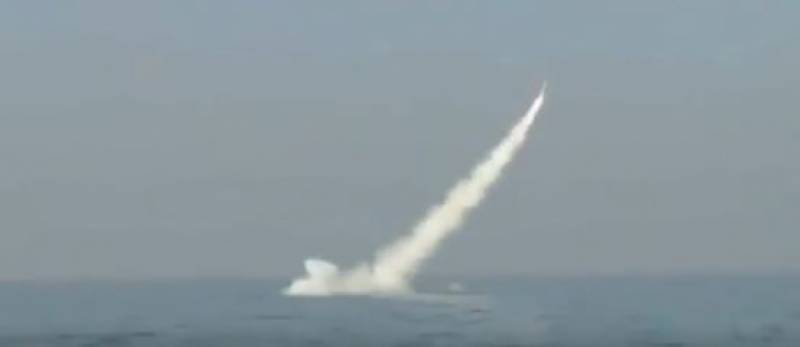ISLAMABAD – Pakistan conducted its first successful test fire of submarine-launched cruise missile (SLCM) Babur-III having a range of 450 kilometers, from an undisclosed location in the Indian Ocean on Monday.
Prime Minister Nawaz Sharif and Chief of Army Staff General Qamar Javed Bajwa congratulated the team behind the launch and the nation on the development.
The test was witnessed by the Chairman Joint Chiefs of Staff Committee (CJCSC) General Zubair Mahmood Hayat, DG Strategic Plans Division (SPD) Lieutenant General Mazhar Jamil, Commander Naval Strategic Force Command (NSFC), senior officials, scientists and engineers from Scientific Strategic Organizations.
The CJCSC and three services chiefs congratulated all the officials involved on achieving this highly significant milestone. He also highlighted that the successful test of SLCM also demonstrates confidence in the technological prowess of our scientists and engineers.
In a statement on Monday, Army spokesman Maj. Gen. Asif Ghafoor said that the missile was fired from an underwater mobile platform and hit its target with precise accuracy. Babur-3 is a sea-based variant of Ground Launched Cruise Missile (GLCM) Babur-2, which was successfully tested earlier in December, last year, according to the Inter Services Public Relations statement.
Babur-3 SLCM incorporates state of the art technologies including underwater controlled propulsion and advanced guidance and navigation features, duly augmented by Global Navigation, Terrain and Scene Matching Systems. The missile features terrain hugging and sea skimming flight capabilities to evade hostile radars and air defenses, in addition to certain stealth technologies, in an emerging regional Ballistic Missile Defence (BMD) environment.
Babur-3 SLCM in land-attack mode, is capable of delivering various types of payloads and will provide Pakistan with a Credible Second Strike Capability, augmenting deterrence. While the pursuit and now the successful attainment of a second strike capability by Pakistan represents a major scientific milestone, it is a manifestation of the strategy of measured response to nuclear strategies and postures being adopted in Pakistan’s neighborhood.
US sanctions
Last month, the US government had placed sanctions against seven Pakistani entities allegedly associated with the country’s missile programme. The move came about on December 15, 2016, when an unexpected notification by the US Department of Commerce named the entities and added them to the Export Administration Regulations list, saying “these government, parastatal and private entities in Pakistan are determined to be involved in activities that are contrary to the national security and/or foreign policy of the United States.”
The facilities in question are thought to be associated with Pakistan’s missile development programme but the US government has not revealed details of violations these entities are alleged to have committed.
All seven have been placed on the entity list under the destination of Pakistan. They are identified as:
(1) Ahad International Suite.
(2) Air Weapons Complex (AWC).
(3) Engineering Solutions Pvt. Ltd.
(4) Maritime Technology Complex (MTC).
(5) National Engineering and Scientific Commission (NESCOM).
(6) New Auto Engineering (NAE).
(7) Universal Tooling Services.
Pakistan has always denied any wrongdoing in connection with its nuclear or missile programme.














